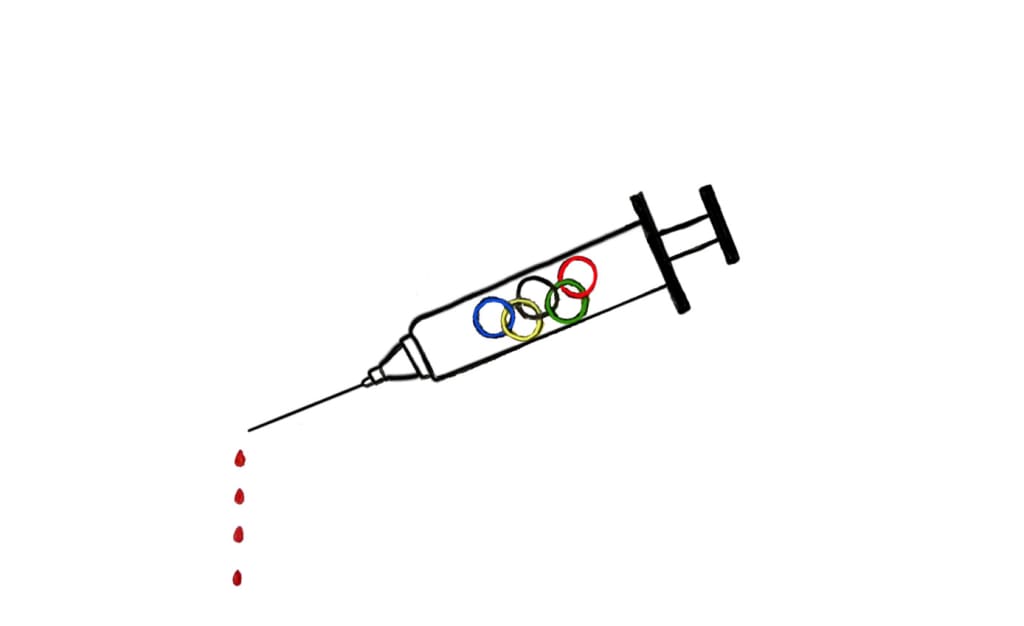I Want To See The Juiced Olympics
Let's see what athletes can do at their peak or when they're peaking on drugs

There’s the regular Olympics, the Special Olympics, and the Paralympics. Isn’t it time for the Juiced Olympics?
THE HISTORY OF DRUG USE FOR ATHLETES
Athletes have been trying to game the system by doping since ancient times. In fact, the Dutch coined the term “doping” based on the word “doop,” an opium juice enjoyed by the ancient Greeks. The early Greeks also consumed hallucinogens, potions made of wine, and the hearts and testicles of animals to heighten their ability.
Gladiators also consumed hallucinogens, along with strychnine (a stimulant), which intensified their battles by eliminating fatigue. In the Roman chariot races, the horses were doped up on a honey-based alcoholic beverage called hydromel to increase their speed.
The Lance Armstrong doping scandal was nothing new to the cycling world. In the late 19th century, French cyclists and lacrosse players enjoyed a mixture of coca leaves and wine they referred to as “the wine for athletes.” The concoction eased the hunger and fatigue induced by extreme exertion.
During the early 1900s, Olympic drug use was a free-for-all. Heroin, cocaine, alcohol, caffeine, and strychnine were used in various combinations. Each coach had his own secret recipe.
In the 1920s, when heroin and cocaine required a prescription, new drugs emerged on the scene. In 1928, the International Association of Athletics Federation (IAAF) officially banned the use of performance enhancing drugs. When the governing body of track and field makes a ruling of this magnitude, the entire sports world takes notice.
In the 1940s, the Nazis began experimenting with anabolic steroids, testosterone, and amphetamines. These substances aided the German soldiers’ strength, stamina, and aggression. Think blitzkrieg! On the downside, prolonged steroid use can make a person psychotic, violent, and paranoid – as exhibited by Hitler in the end. It wasn’t just the Germans who were doped up during WWII. The Americans, Brits, and Japanese were also using amphetamines to keep them awake and alert.
By the 1950s, a variety of drugs entered the sports world. Italian cyclists called amphetamines “la bamba” and the Dutch called it “atoom.” In the 1954 Olympics, when the Russians dominated the weightlifting competition by using testosterone, the Americans took notice and began experimenting. The FDA actually approved the use of anabolic steroids in 1958.
The fun came to an end in 1967, when the International Olympic Committee (IOC) formed a committee to combat doping, following a couple of tragic incidents. In 1960, Knud Jensen, a Danish cyclist, collapsed during the Summer Olympics in Rome, fractured his skull, and died. His autopsy turned up a small amount of amphetamines. In 1967, Tommy Simpson, a British cyclist consumed amphetamines and road to his death when his body literally shut down. Simpson’s motto had been, “if it takes ten to kill you, take nine and win.”
The goal of the Medical Commission to Fight Doping was “protection of the health of athletes, respect for medical and sport ethics, and equality for all athletes.” Banned substances included stimulants and narcotics. Since accurate testing for anabolic steroids had not been achieved, they were not banned.
The 1972 Summer Olympics in Munich was the first time that full-scale drug testing was implemented. Seven athletes failed their tests and were disqualified. However, the first athlete to surrender his medal was Swedish bronze-winning pentathlon winner, Hans-Gunnar Liljenwall, at the 1968 Olympics in Mexico City, who partook in a couple of beers before the shooting portion of the event to “calm his nerves.” The IOC was not fooling around, they forced the entire Swedish team to surrender their medals after Liljenwall’s disgrace. Randomly, the 14 athletes who consumed tranquilizers at the same Olympics were not punished, since tranquilizers were not yet banned.
As more and more drugs were banned, athletes, coaches, and nations devised increasingly sophisticated techniques to cheat the system. Some won and others lost spectacularly.
In 1988, Canadian sprinter, Ben Johnson, tested positive for steroids following the Olympics in Seoul, Korea. Although he claimed that someone spiked his drink, following another positive drug test in 1993, the IOC banned Johnson for life. Dude was fast as hell. Imagine Ben Johnson in a roid rage enhanced with a solid dose of coke. Oh yeah! That would be a sight to see.
Envision what Michael Phelps could have accomplished if he wasn’t just smoking weed!
RELAX – IT’S NOT SO BAD
Any “gentle readers” still engaged; you can calm down. There’s no need to get your panties in a bunch. A place for the regular – non-juiced – Olympics will still exist for you purists. Consider the Juiced Olympics to be a bonus Olympics, played like they were in the good ol’ days – only better. Picture the excitement of watching this kind of action. Think about the sponsors that the Juiced Olympics will attract. The ratings will be fabulous – absolutely huge.
THE WAYS OF THE WORLD
We live in a time of professional warriors and hired mercenaries – like the Wagner Group: a gang of criminals and others who are on the front line of Putin’s War in Ukraine. By all accounts, Wagner Group “soldiers” are often dressed only in pants and t-shirts, despite freezing temperatures, while they dig trenches under fire. After the front man is shot, another steps up to take his place. When they storm the Ukrainian forces, as one is shot down, the next Wagner Group soldier rushes forward, climbing over his dead comrades, to attack his enemy. Ukrainians describe these men as zombies.
U.S. Air Force pilots have been using go-pills – the amphetamine Dexedrine – since the Battle of Britain during WWII. Although controversial, military doctors recognize the need to remain hyper-alert during a 30-hour mission. While the use of this drug is voluntary, few pilots would want to be without this chemical aid while in the cockpit during a dicey situation.
It’s time to get back to basics and celebrate the Olympics the way they were meant to be played – high as hell. Given the military history of chemically-modifying soldiers with various substances to amp them up, numb them out, and transform them into killing machines (or brain-dead, human digging machines in the case of Ukraine), why stop there. Instead of penalizing doped athletes – celebrate them.
This is not that radical of a position. In 2012, Chris Smith wrote an article for Forbes magazine calling for the legalization of performing enhancement drugs in sports. Smith cites numerous factors to back his position, including the “blurry line” that separates acceptable substances such as caffeine and creatine from prohibited substances like steroids and methamphetamine. Smith notes that athletes are using them anyway – often from sketchy, back-alley dealers. Legalization will be safer. For those who argue that athletes’ safety will be compromised if doping is legalized, Smith points out that between concussions and broken bones, professional athletes are risking their health – and life – merely by participating. Plus, sorting out users from non-users is like playing a game of whack-a-mole. Smith correctly identifies that a “huge part of watching sports is witnessing the very peak of human athletic ability, and legalizing performance enhancing drugs would help athletes climb even higher.” Ultimately, it’s the hardcore, balls-to-the-wall action that the fans crave.
SINCE EVERYONE IS DOING IT ANYWAY, LET’S GO BIG – REALLY BIG.
We need athletes slamming shit at the starting gate. Train them on steroids, then hit them up with the good dope – designer shit – right before the competition. Give the motherfuckers some meth and see how high or low they really can go.
The content of this article was inspired by a conversation with my son.
© Joyce O’Day 2023. All Rights Reserved.
AI was NOT used in the creation of this article.
This article was originally published at joyceoday.com on April 13, 2023.
About the Creator
Joyce O’Day
After retiring from teaching world history for over 20 years, I am living every day on holiday: enjoying life with my family, traveling, gardening, engaging with my community in Las Vegas, and reflecting on the current state of the world.






Comments
There are no comments for this story
Be the first to respond and start the conversation.